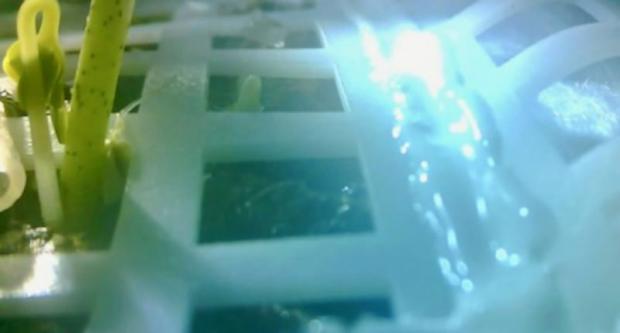
Breaking News
 NonConformist Series: Practical Wealth - Join us virtually Dec 29-30, 2025
NonConformist Series: Practical Wealth - Join us virtually Dec 29-30, 2025
 New bill would allow private citizens to fight cartels: 'WE ARE UNDER ATTACK'
New bill would allow private citizens to fight cartels: 'WE ARE UNDER ATTACK'
 Carnivore Got Me 90% There. This One Drink Changed Everything
Carnivore Got Me 90% There. This One Drink Changed Everything
Top Tech News
 Perfect Aircrete, Kitchen Ingredients.
Perfect Aircrete, Kitchen Ingredients.
 Futuristic pixel-raising display lets you feel what's onscreen
Futuristic pixel-raising display lets you feel what's onscreen
 Cutting-Edge Facility Generates Pure Water and Hydrogen Fuel from Seawater for Mere Pennies
Cutting-Edge Facility Generates Pure Water and Hydrogen Fuel from Seawater for Mere Pennies
 This tiny dev board is packed with features for ambitious makers
This tiny dev board is packed with features for ambitious makers
 Scientists Discover Gel to Regrow Tooth Enamel
Scientists Discover Gel to Regrow Tooth Enamel
 Vitamin C and Dandelion Root Killing Cancer Cells -- as Former CDC Director Calls for COVID-19...
Vitamin C and Dandelion Root Killing Cancer Cells -- as Former CDC Director Calls for COVID-19...
 Galactic Brain: US firm plans space-based data centers, power grid to challenge China
Galactic Brain: US firm plans space-based data centers, power grid to challenge China
 A microbial cleanup for glyphosate just earned a patent. Here's why that matters
A microbial cleanup for glyphosate just earned a patent. Here's why that matters
 Japan Breaks Internet Speed Record with 5 Million Times Faster Data Transfer
Japan Breaks Internet Speed Record with 5 Million Times Faster Data Transfer
China's Chang'e-4 probe sprouts the first ever seeds on the Moon

It says a sealed container carried aboard the lander has given rise to the first ever seedlings to sprout on the Moon, marking tiny but important progress in its plans to establish a lunar base by 2022.
The Chang'e-4 mission's science objectives are varied, including conducting pioneering radio astronomy from the Moon's far side, scouting its uncharted areas for signs of water and uncovering ancient secrets about how the satellite was formed.
Also packed aboard the Chang'e-4 spacecraft before it was fired into space on December 8 was a capsule prepared by scientists at Chongqing University containing an important biological growth experiment. Through it, the researchers hope to learn more about how plants develop in the low gravity, high radiation and wildly fluctuating temperatures of the lunar environment.
To investigate this, the team packed seedlings for cotton, potato, rapeseed, and thale cress plants, along with yeast and fruit fly eggs. It was hoped that the fruit flies and yeast, as consumers and decomposers, could consume oxygen and produce carbon dioxide, which the plants could then use for photosynthesis to create a miniature biosphere inside a sealed container on the Moon.

 Aluminum Causes Brain Damage
Aluminum Causes Brain Damage Advanced Propulsion Resources Part 1 of 2
Advanced Propulsion Resources Part 1 of 2





